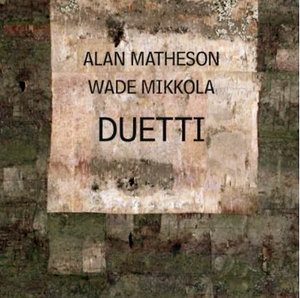Author: Kurth, Richard
Publication details: Hochschule für Music Saar, Saarbrücken, Germany
Materialität und Vocalität in György Kurtágs Attila József Fragmente für solo Sopran, op. 20
A Geometry of Music: Harmony and Counterpoint in the Extended Common Practice
Author: Roeder, John
Publication details: Journal of Music Theory 57, no. 1 (2013): 159–191
Weblink: https://dukeupress.edu
Can musicians track two different beats simultaneously?
Author: Poudrier, Ève, Repp, B.H.
Publication details: Music Perception: An Interdisciplinary Journal 30, no. 4 (2013): 369-90.
Weblink: http://cogsys.ubc.ca
Abstract: The simultaneous presence of different meters is not uncommon in Western art music and the music of various non-Western cultures. However, it is unclear how listeners and performers deal with this situation, and whether it is possible to cognitively establish and maintain different beats simultaneously without integrating them into a single metric framework. The present study is an attempt to address this issue empirically. Two rhythms, distinguished by pitch register and representing different meters (2/4 and 6/8), were presented simultaneously in various phase relationships, and participants (who were classically trained musicians) had to judge whether a probe fell on the beat in one or both rhythms. In a selective attention condition, they had to attend to one rhythm and to ignore the other, whereas in a divided attention condition, they had to attend to both. In Experiment 1, participants performed significantly better in the divided attention condition than predicted if they had been able to attend to only one rhythm at a time. In Experiments 2 and 3, however, which used more complex combinations of rhythms, performance did not differ significantly from chance. These results suggest that in Experiment 1 participants relied on the composite beat pattern (i.e., a nonisochronous sequence corresponding to the serial ordering of the two underlying beats) rather than tracking the two beats independently, while in Experiments 2 and 3, the level of complexity of the composite beat pattern may have prevented participants from tracking both beats simultaneously.
Liquid States

Ensemble: Standing Wave
Performers: Christie Reside flutes, A-K Coope clarinets, Rebecca Whitling violin, Peggy Lee cello, Allen Stiles piano, Vern Griffiths percussion
Featured composition: Theft by Jocelyn Morlock
Recording details: Redshift Records, 2013
Link
Radiohead’s ‘Pyramid Song’: Ambiguity, Rhythm, and Participation
Author: Hesselink, Nathan
Publication details: Music Theory Online 19, no. 1 (March 2013).
Weblink: http://mtosmt.org
Abstract: This article demonstrates how the confluence of ambiguity and rhythm in a pop/rock song creates a powerful force for audience participation. Focusing on Radiohead’s “Pyramid Song” (2001) as a case study, I document in detail the myriad ways listening audiences have made sense of its meter and how this knowledge has informed their interpretations of compositional intent. I conclude with further thoughts on the roles and possibilities of ambiguity and the directions it points towards mass participation and collaborative problem solving in the realms of aesthetics and music theory.
Beginnings and Endings, Four Decades Apart: Arnold Schoenberg’s String Quartets of 1897 and 1936
Author: Kurth, Richard
Publication details: Symposium on the String Quartets of the Second Viennese School. School of Music, University of Victoria
Widerhallendes Orakel: Stefan Litwins Allende, 11. September 1973
Author: Kurth, Richard
Publication details: El Once: Chile, 11. September 1973. Reflexionen zum 40. Jahrestag des Militärputsches gegen Salvador Allende, edited by Heike Hoffmann and Martin Schmidt, 154-157. Schiffweiler, Germany: Gligg, 2013
Weblink: https://worldcat.org/
Schubert’s Winterreise: Interior Landscape of the Barren Male
Author: Kurth, Richard
Publication details: Vancouver International Song Institute
Verdi beyond Verdi
Author: Vellutini, Claudio
Publication details: Cambridge Opera Journal 25, no. 3 (2013): 319-28
Weblink: http://academia.edu
